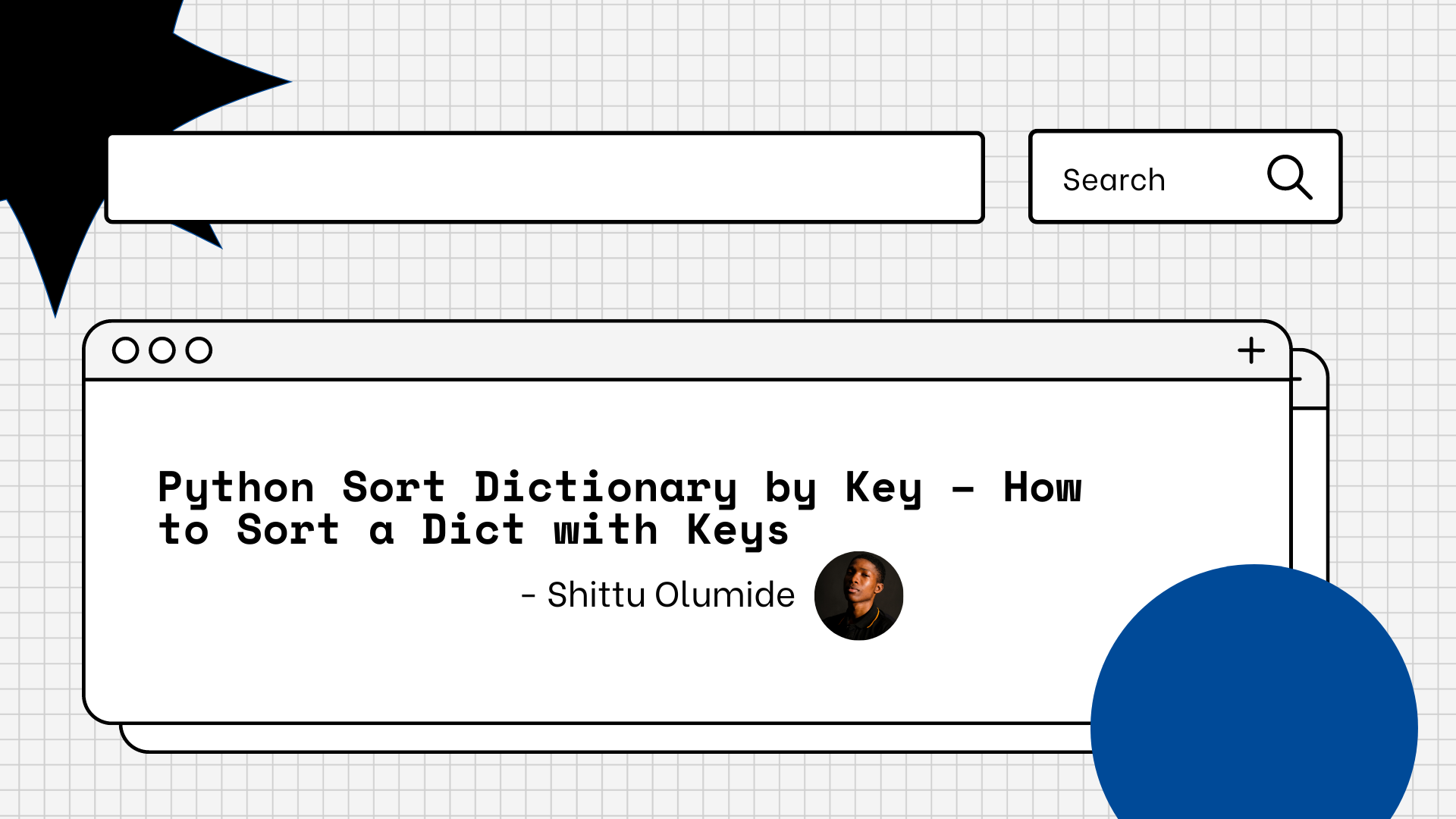By Shittu Olumide
Sorting is a fundamental operation in computer programming that involves arranging elements in a specific order.
Whether you're working with numbers, strings, or complex data structures, sorting plays a crucial role in organizing and manipulating data efficiently.
From small arrays to large datasets, sorting algorithms allow programmers to solve a wide range of problems, from searching for specific values to optimizing data access and analysis.
In this article, we will explore how to sort a dictionary with keys in Python. We will break down the steps for easy follow up and understanding. I recommend that you be familiar with the Python programming language to get the most out of this article.
What is a Python Dictionary?
In Python, dictionaries are a powerful data structure used to store key-value pairs. They provide a convenient way to organize and retrieve data based on unique keys. But there may be situations where you need to sort a dictionary by its keys in a specific order.
A key in Python refers to the unique identifier associated with a specific value. It serves as a way to access and retrieve values from the dictionary based on their corresponding keys. Keys in a dictionary can be of any immutable data type, such as strings, numbers (integers or floats), or tuples. The key must be unique within the dictionary, meaning that no two keys can have the same value.
Ways to Sort a Dict by Keys in Python
Method 1: Using the sorted() Function
The simplest way to sort a dictionary by its keys is by using the sorted() function along with the items() method of the dictionary.
The items() method returns a list of key-value pairs as tuples. By passing this list to the sorted() function, we can sort the tuples based on their first element (the keys).
Example:
my_dict = {'b': 2, 'a': 1, 'c': 3}
sorted_dict = dict(sorted(my_dict.items()))
print(sorted_dict)
Output:
{'a': 1, 'b': 2, 'c': 3}
In this example, the sorted() function takes the my_dict.items() list and returns a new sorted list of tuples. We use the dict() constructor to convert the sorted list back into a dictionary.
Method 2: Using a List of Tuples
If you prefer a more manual approach, you can convert the dictionary to a list of tuples, sort the list using any sorting technique available in Python, and then convert it back to a dictionary.
Example:
my_dict = {'b': 2, 'a': 1, 'c': 3}
sorted_list = sorted(my_dict.items())
sorted_dict = {}
for key, value in sorted_list:
sorted_dict[key] = value
print(sorted_dict)
Output:
{'a': 1, 'b': 2, 'c': 3}
In this example, we used the sorted() function to sort the my_dict.items() list. Then, a new empty dictionary, sorted_dict, is created. The sorted list is iterated over, and each key-value pair is added to the sorted_dict using assignment.
Method 3: Using the collections.OrderedDict Class
Another approach to sorting a dictionary by key is to use the collections.OrderedDict class from the Python standard library.
This class is a dict subclass that remembers the order of its elements based on the insertion order. We can leverage this feature to achieve key-based sorting.
Example:
from collections import OrderedDict
my_dict = {'b': 2, 'a': 1, 'c': 3}
sorted_dict = OrderedDict(sorted(my_dict.items()))
print(sorted_dict)
Output:
OrderedDict([('a', 1), ('b', 2), ('c', 3)])
In this example, the sorted() function is used to sort the my_dict.items() list, and then the sorted list is passed to the OrderedDict() constructor to create a new dictionary with the sorted order.
Conclusion
In Python, you can sort a dictionary by its keys using various methods. In this article, we explored three approaches: using the sorted() function, utilizing the collections.OrderedDict class, and manually sorting a list of tuples. Each method provides a different level of control and flexibility.
By using the sorted() function, we can quickly sort a dictionary by key and obtain a new dictionary as the result. If preservation of the insertion order is crucial, the collections.OrderedDict class is a suitable choice.
For those who prefer a more manual approach, converting the dictionary to a list of tuples, sorting the list, and then creating a new dictionary can provide more customization options.
Let's connect on Twitter and on LinkedIn. You can also subscribe to my YouTube channel.
Happy Coding!
